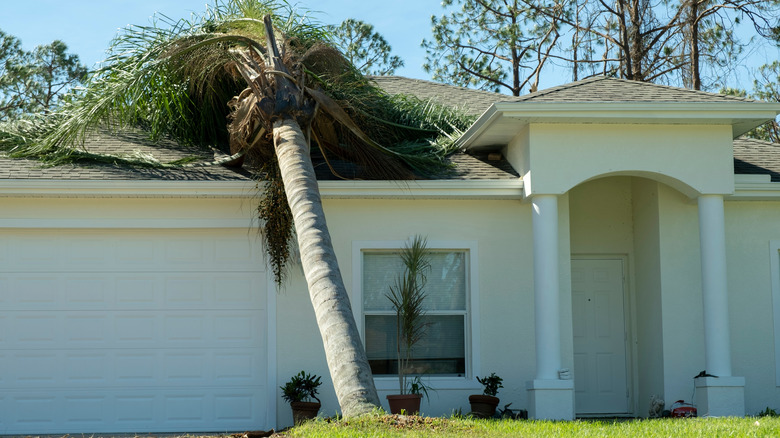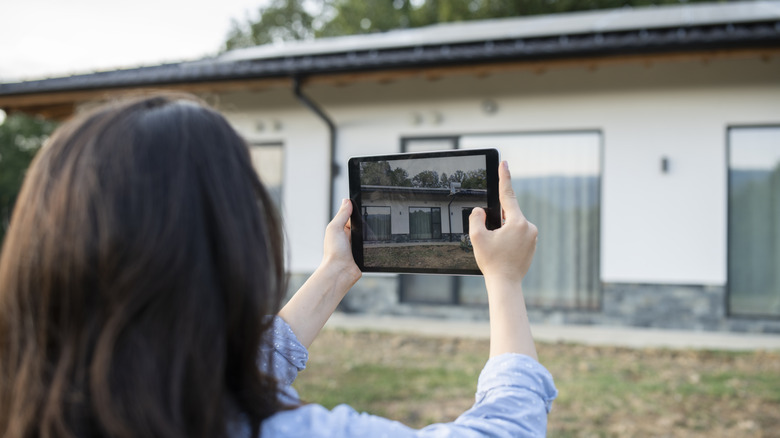What To Do If Your Roof Is Damaged In A Storm
If the howling wind and lashing rain wasn't enough to postpone your evening plans, the tree branch that crashed onto your roof sealed the deal. Storms are unpredictable beasts — you never know what they'll throw your way, making it tough to fully disaster-proof your home. And while it's hard to anticipate the costs of the potential damage, thankfully many homeowners' insurance policies cover storm damage. So, what steps should you take if it happens to you?
First, assess the damage. While filing a claim is important, your safety comes first. Avoid walking on or near the roof, as it may be unstable. Instead, inspect the roof from the ground, noting missing shingles, exposed wiring, fallen debris, and other visible damage. Make sure to exercise caution under damaged areas as well, as loose pieces of debris could still fall. You should also check your home for any water stains on your ceiling, which can indicate a leaky roof. If safe to do so, and only for minor damage like loose shingles, you can make temporary repairs like securing shingles with roofing nails or covering holes with tarps until a professional arrives.
Even if a roof looks okay, it still has the potential to collapse from the damages, which is extremely dangerous. If you believe your home is uninhabitable, find temporary housing with loved ones or in short-term rentals in the meantime. Also keep your insurance company in the loop every step of the way — it's crucial for a smooth claims process and getting the compensation you deserve. The more details you can provide, the better. This brings us to the next step.
Document the damage for your insurance claim
Now that you've got a handle on the immediate situation, it's time to document everything for your homeowner's insurance claim, detective style. You'll need to gather all the evidence you can get. Use your phone or camera and take photos and videos of everything — the damaged roof, the interior leaks, and even the debris in your yard. Don't just focus on the obvious; capture the smaller details, too. A written record of what was damaged is also helpful. The more information you have, the stronger your insurance claim will be.
Beyond your own documentation, it's also a wise move to bring in the professionals. Scheduling a roof inspection with a reputable contractor can be a game-changer. Their trained eye and expert assessment will catch things you might have missed, adding serious weight to your insurance claim. Once you've gathered all this evidence (yours and the contractor's), it's time to officially file your claim.
Make sure you follow the insurance company's instructions and provide all the necessary documentation. This might include your photos and videos, the contractor's inspection report, any repair estimates or receipts for temporary fixes you made, and a detailed description of the damage. Hold on to those receipts from any hotels or short-term rentals you needed during this time, too. Your insurance might just reimburse you for those costs. Once your claim is approved, you can schedule the actual repairs with your chosen contractor.

